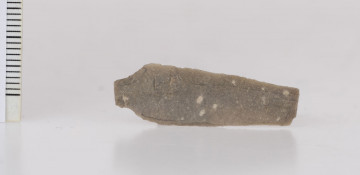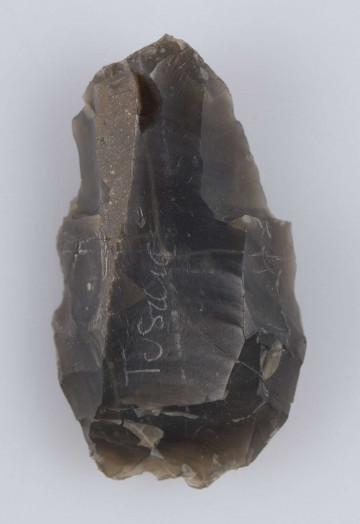
Tanged point
National Museum in Lublin
Part of the collection: Archaeological monuments of the Lublin region
The artefact shown in the photographs was found in Jeziernia, in the Tomaszów poviat. It is a flint tool made by the Palaeolithic people of the Swiderian culture about 10 thousand years ago.
Since the oldest times, flint has been the basic raw material for the manufacture of various tools, including scrapers.
Such artefacts could have been used both as tools for scraping skin, i.e. to cleanse it of meat remains, and for working bones, antlers and wood. Cases are also recorded of them being used as tools for cutting various raw materials. However, the main function of scrapers was precisely skinning. Not so long ago, the same use of these tools could be observed among North American Indian and Inuit communities.
Tools called flint scrapers were common for a very long time. Archaeologists record their finding in many cultures throughout history from the Upper Palaeolithic, through the Mesolithic, to the Neolithic.
The artefact we are describing was used by a community which dealt mainly with reindeer hunting. The hunters needed tools with which they could quickly and accurately process the skins of the hunted animals.
And such was the flint scraper, an exquisite product of human hands, the first choice among tools for skinning for millennia.
Author / creator
Dimensions
cały obiekt: height: 3,2 cm, width: 2,5 cm
Object type
tool
Technique
carving
Creation / finding place
Owner
The National Museum in Lublin
Identification number
Location / status

National Museum in Lublin

National Museum in Lublin

National Museum in Lublin
DISCOVER this TOPIC
National Museum in Szczecin
DISCOVER this PATH
Educational path